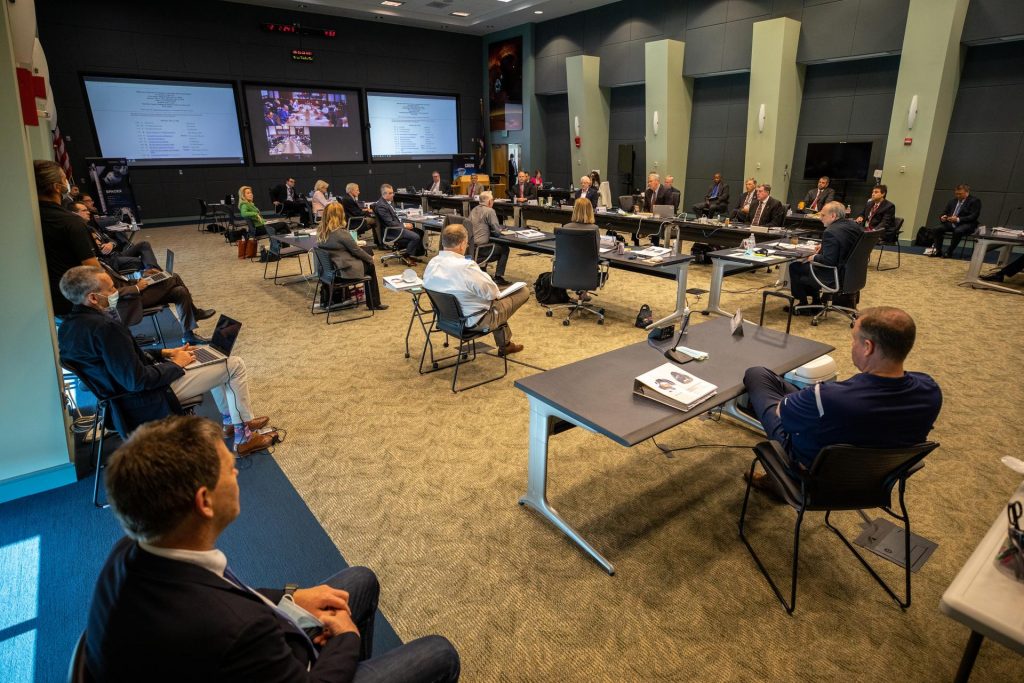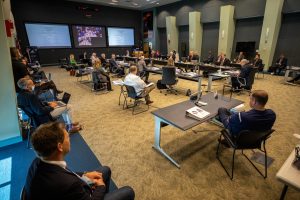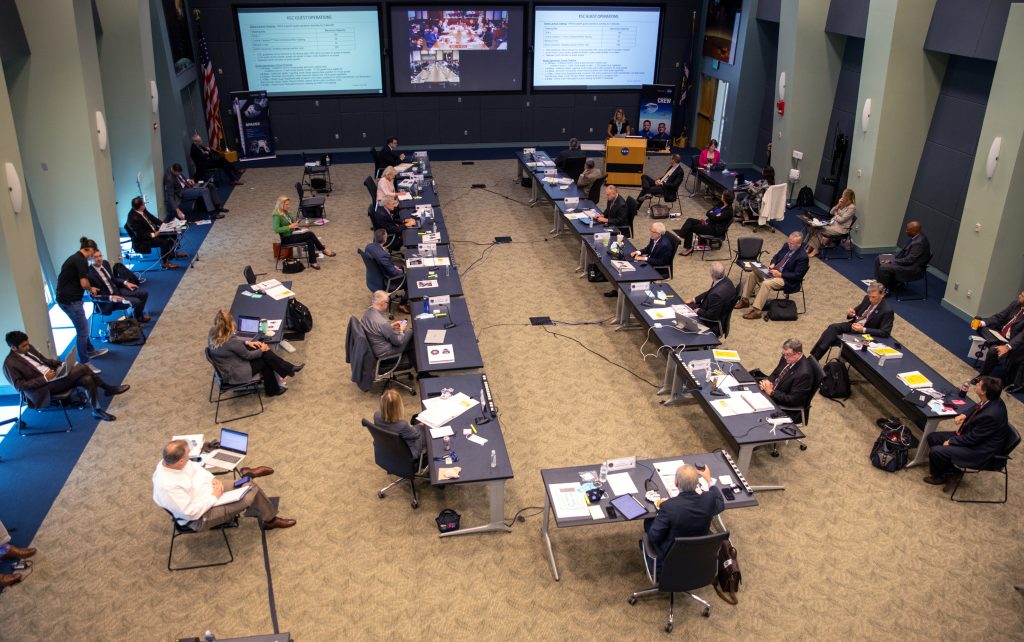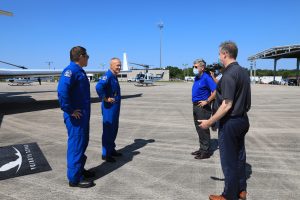
Editor’s note: This post was updated to note that the prelaunch news conference is now a media teleconference only and will not be broadcast on NASA TV. Live audio of the teleconference will be streamed at http://www.nasa.gov/live.
Key managers and officials from NASA and SpaceX will convene at the agency’s Kennedy Space Center in Florida today for the Launch Readiness Review, the final planned review before the agency’s SpaceX Demo-2 mission begins. Liftoff of the SpaceX Falcon 9 rocket and Crew Dragon spacecraft, carrying NASA astronauts Robert Behnken and Douglas Hurley, is scheduled for Wednesday, May 27, at 4:33 p.m. EDT from Kennedy’s Launch Complex 39A.
A prelaunch media teleconference will follow at 6 p.m. or approximately one hour after the review ends. Participants:
- Kathy Lueders, manager, NASA Commercial Crew Program
- Kirk Shireman, manager, NASA International Space Station Program
- Hans Koenigsmann, vice president, Build and Flight Reliability, SpaceX
- Norm Knight, deputy director, Flight Operations, NASA Johnson Space Center
- Mike McAleenan, launch weather officer, 45th Weather Squadron
The U.S. Air Force 45th Weather Squadron are predicting a 40% chance of favorable weather conditions for the Demo-2 mission. The primary weather concerns for launch are flight through precipitation, thick and cumulus clouds.
FORECAST DETAILS
Clouds Coverage Bases (feet) Tops (feet)
Cumulus Scattered 3,000 15,000
Altostratus Broken 10,000 17,000
Weather/Visibility: Rain showers/5 miles
Temperature: 82 degrees
Listen to the prelaunch media teleconference live at http://www.nasa.gov/live. This will not be broadcast on NASA TV.
NASA’s SpaceX Demo-2 mission will return human spaceflight to the International Space Station from U.S. soil on an American rocket and spacecraft as a part of NASA’s Commercial Crew Program. Demo-2 will be SpaceX’s final test flight to validate its crew transportation system, including the Crew Dragon, Falcon 9, launch pad and operations capabilities. During the mission, the crew and SpaceX mission controllers will verify the performance of the spacecraft’s environmental control system, displays and control system, maneuvering thrusters, autonomous docking capability, and more. Behnken and Hurley will join the Expedition 63 crew on the station to conduct important research as well as support station operations and maintenance. While docked to the station, the crew will run tests to ensure the Crew Dragon spacecraft is capable on future missions of remaining connected to the station for up to 210 days. The specific duration for this mission will be determined after arrival based on the readiness of the next commercial crew launch. Finally, the mission will conclude with the Crew Dragon undocking from the station, deorbiting and returning Behnken and Hurley to Earth with a safe splashdown in the Atlantic Ocean.
Follow along with launch activities and get more information about the mission at: https://blogs.nasa.gov/commercialcrew. Learn more about commercial crew and space station activities by following @Commercial_Crew, @space_station, and @ISS_Research on Twitter as well as the Commercial Crew Facebook, ISS Facebook and ISS Instagram accounts.















